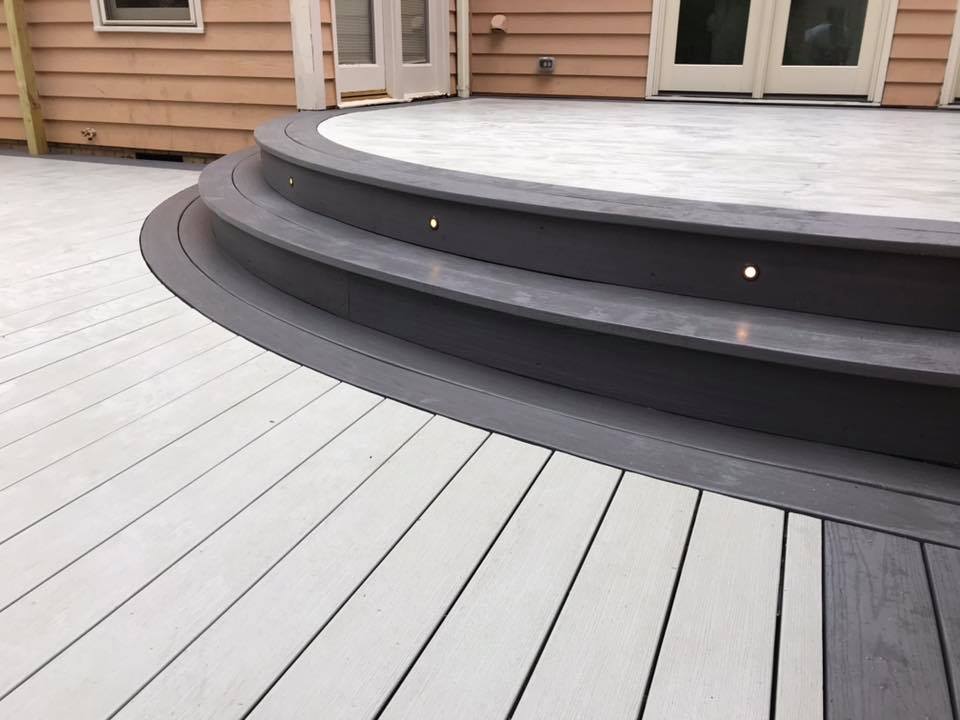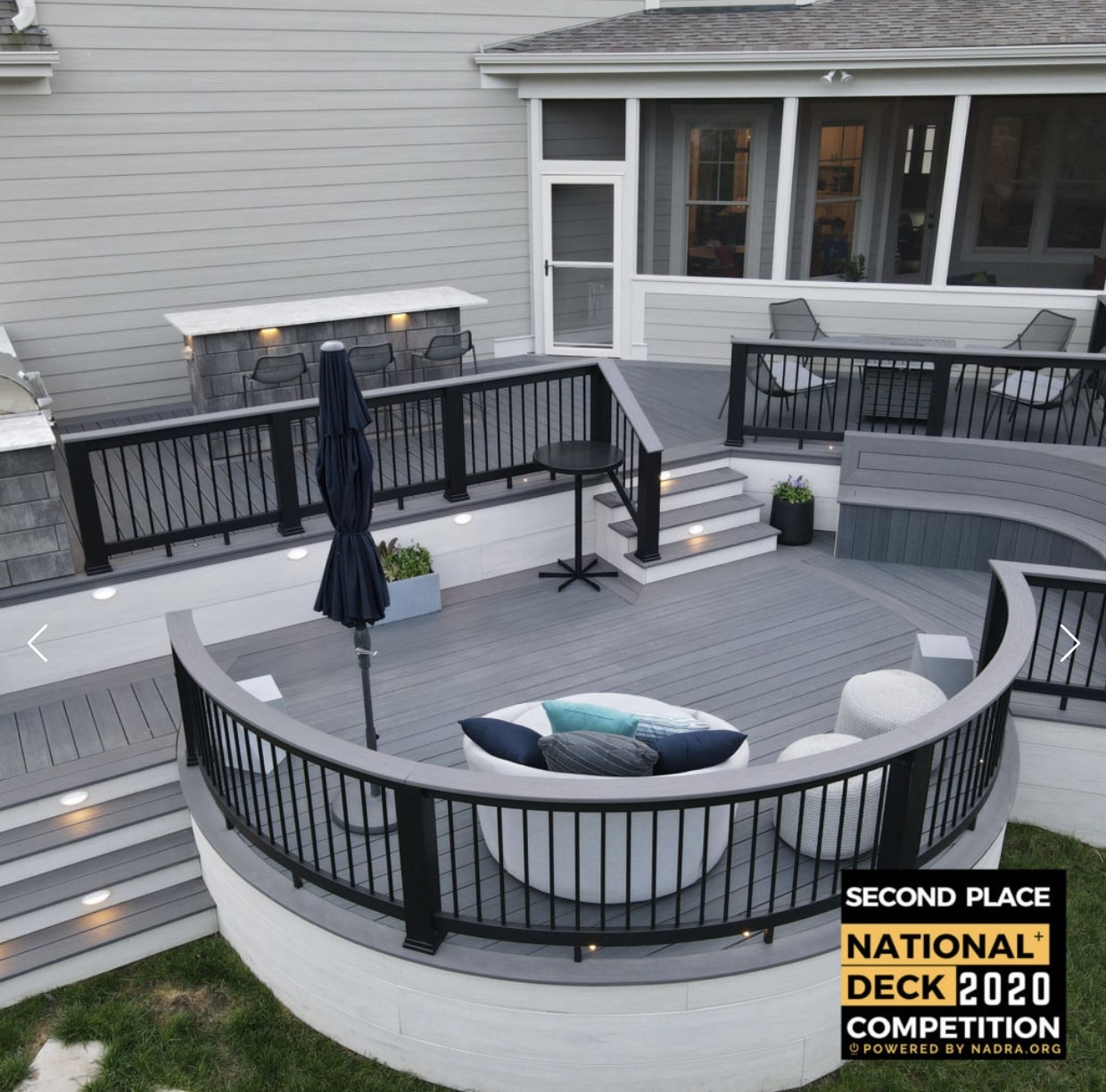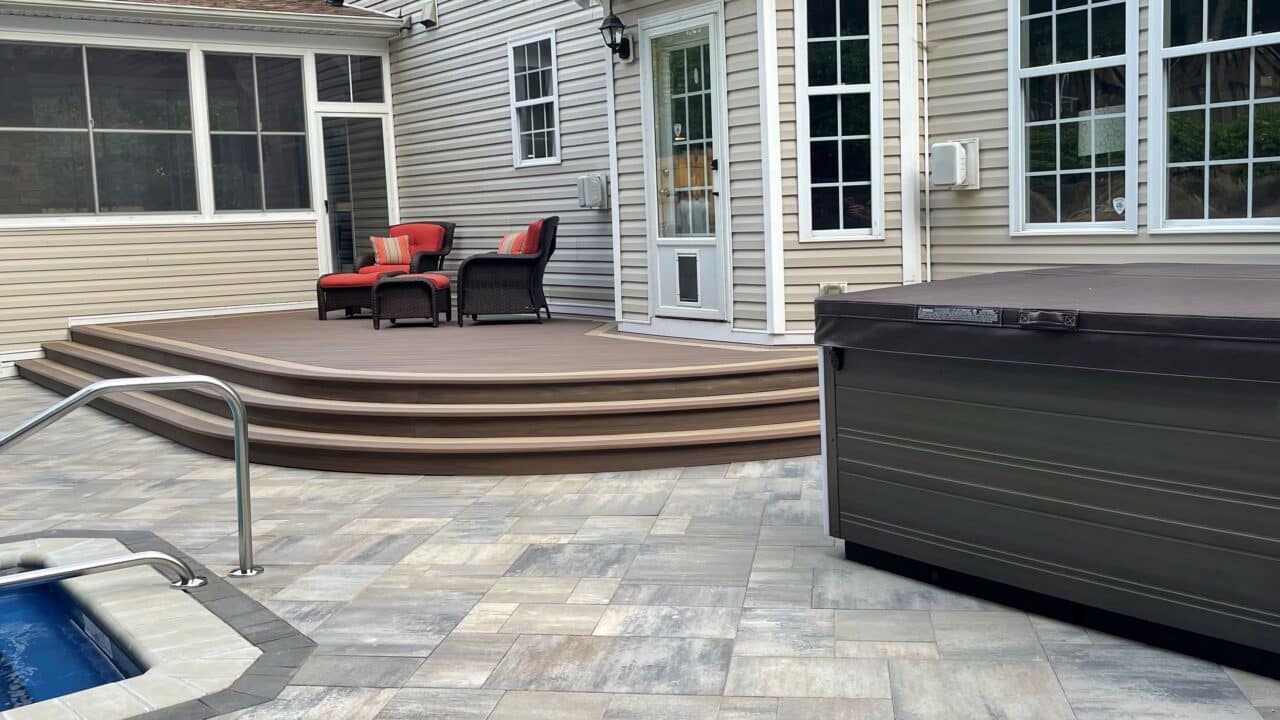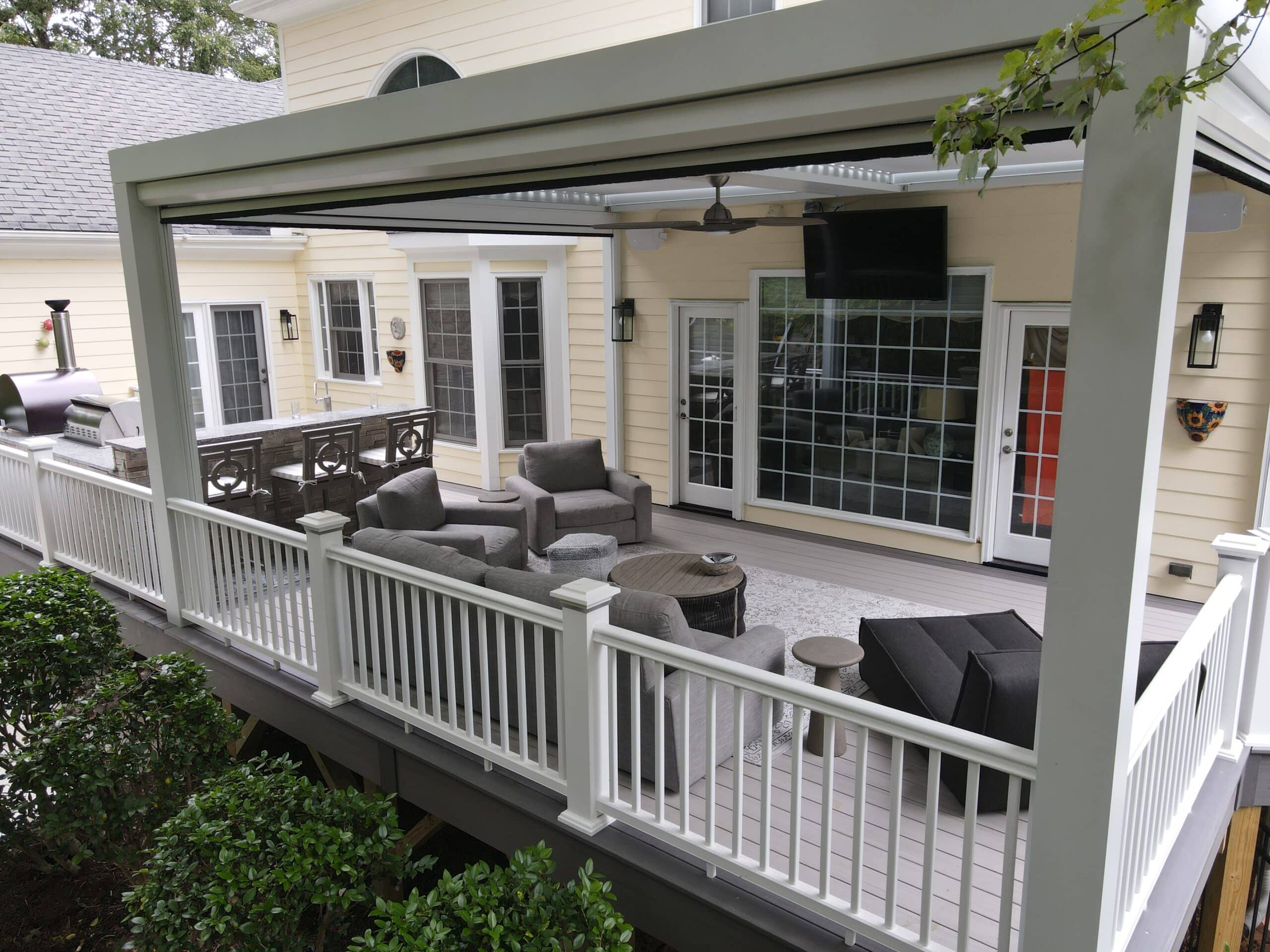Curved Deck Framing: Balancing Beauty and Practicality
Looking at a curved deck in your backyard feels like stepping into a luxurious outdoor space, perfectly matching your home to form a beautiful area. Curved decks bring something special, mixing elegance with practical design to improve your outdoor space.
More people are choosing unique, non-standard decks, and curved ones are popular for their looks and usefulness. However, building one can be complex and involve detailed work, especially with the curved deck framing. It also requires the right materials to ensure it lasts and remains safe.
Starting a curved deck project might seem difficult, but if you want to make your outdoor space stand out, our deck professionals at Majestic Outdoors are here to help.
Learn about the skill of creating curved decks and see how they can change your outdoor area.

Curved Deck Framing: The Foundation for Your Curved Deck
Framing a curved deck presents distinct challenges and necessitates specialized techniques, unlike those used for standard rectangular decks. Here are some essential aspects of curved deck framing:

- Layout and Design Complexity: The unique shape of a curved deck means that joists, decking boards, and connection points will vary in length, leading to a more intricate layout and design process. To support the curved shape effectively, framers often use several short sections of girders or beams arranged in a V-shape or arc rather than a single, long, straight beam.
- Joist Installation: Installing joists for a curved deck involves cutting them at diverse angles to align with the curved layout marked on their ends. Solid blocking between the ends of curved joists is necessary to offer a firm base for fixing the curved rim joist and the railing posts. Extending the joists further from the main beam supports might be required for decks with tighter curves.
- Choosing Framing Materials: Since wood can warp over time, alternatives like composite decking materials are often recommended, especially for achieving tighter curves. If you decide to use wood, opting for denser varieties such as cedar or redwood, which have close growth rings, is advisable as they are more likely to retain curves without splitting.
- Lamination and Wood Bending Techniques: Extremely tight curves might require wood to be sliced into thin strips and then glued together with waterproof adhesive while being bent into shape. Alternatively, wood can be made more flexible for bending around curves through steam bending or kerfing (cutting grooves in the wood). Composite deck blankets can be used for composite deck boards and vinyl decking. They are like big heating pads for the boards that will raise the heat and make them easy to bend.
Constructing the framing for a curved deck involves meticulous planning, angle adjustments, durable materials capable of maintaining curves, and possibly employing methods to laminate or bend wood components. These factors collectively contribute to the increased complexity of building curved decks compared to their rectangular counterparts.
Why Homeowners Choose Curved Decks

Curved decks will require more work and add complexity to the project. So, why do people ask for curved decks if this is the case?
Homeowners opt for curved decks for several compelling reasons despite the higher complexity and costs involved:
- Visual Appeal: Curved decks stand out for their eye-catching beauty and distinct design. They are the backyard's focal point, boasting smooth lines and graceful curves that deliver a sophisticated, upscale appearance. These decks echo the rounded features of the home, like turrets, enhancing the overall architectural harmony. Unlike the common rectangular designs, curved decks offer a unique visual charm that captures attention.
- Views and Connectivity: Curved designs improve the views and connection between the indoor and outdoor living areas. They offer wide, unobstructed views, making strolls along their edges a panoramic experience. The smooth transition they create between the home and the outdoors integrates the deck seamlessly with the home's design as if it were always a part of it.
- Optimizing Outdoor Space: Curved decks are sometimes the most efficient way to utilize uneven or limited outdoor areas. They can be designed to fit around garden elements or the home's structure, keeping the natural landscape intact. Additionally, for properties with expansive views, a curved deck that wraps around the house provides opportunities to enjoy the sun or shade while taking in the surroundings.
Curved Deck Construction: Navigating the Complexities of Design, Stability, and Beauty
Constructing a curved deck involves complex framing considerations distinct from traditional deck designs. This complexity touches on several critical aspects:
- Increased Framing Challenges: The unique shape of a curved deck necessitates custom lengths for joists, deck boards, and connection points, leading to additional cutting, more materials, and increased labor and costs. Planning the layout, including footings, material procurement, and stairs, is more intricate than straight-edged decks.
- Ensuring Structural Stability: To prevent the deck from feeling unstable or bouncy, structural integrity is vital. This may involve extending joists beyond beams, employing joist hangers, inserting blocks between joists, and installing additional support posts or piers, particularly for decks with significant curves.
- Curved Railing Considerations: The railing on a curved deck also requires careful planning and custom fabrication. Creating a curved top rail often involves laminating several wider boards. While prefabricated curved railings made of metal or steel offer a solution, they represent an added expense.
When You Want Something Special, Let Majestic Outdoors Design and Build a Curved Deck
When you want a luxurious look to your home, you want a curved deck. However, it requires experienced professionals with special tools to make it happen. If you desire a curved deck to add appeal and value to your home, contact us today for a free estimate.



